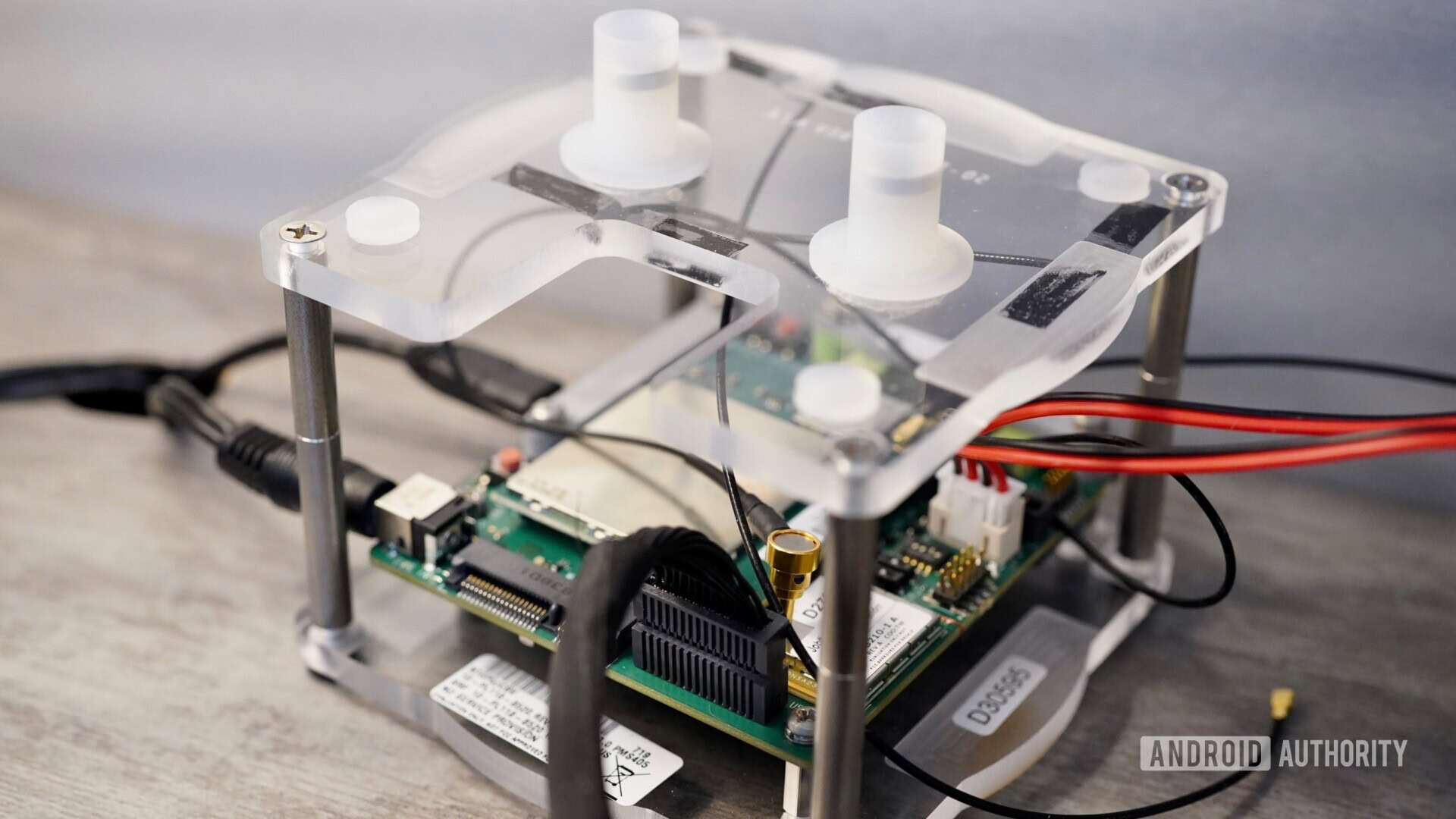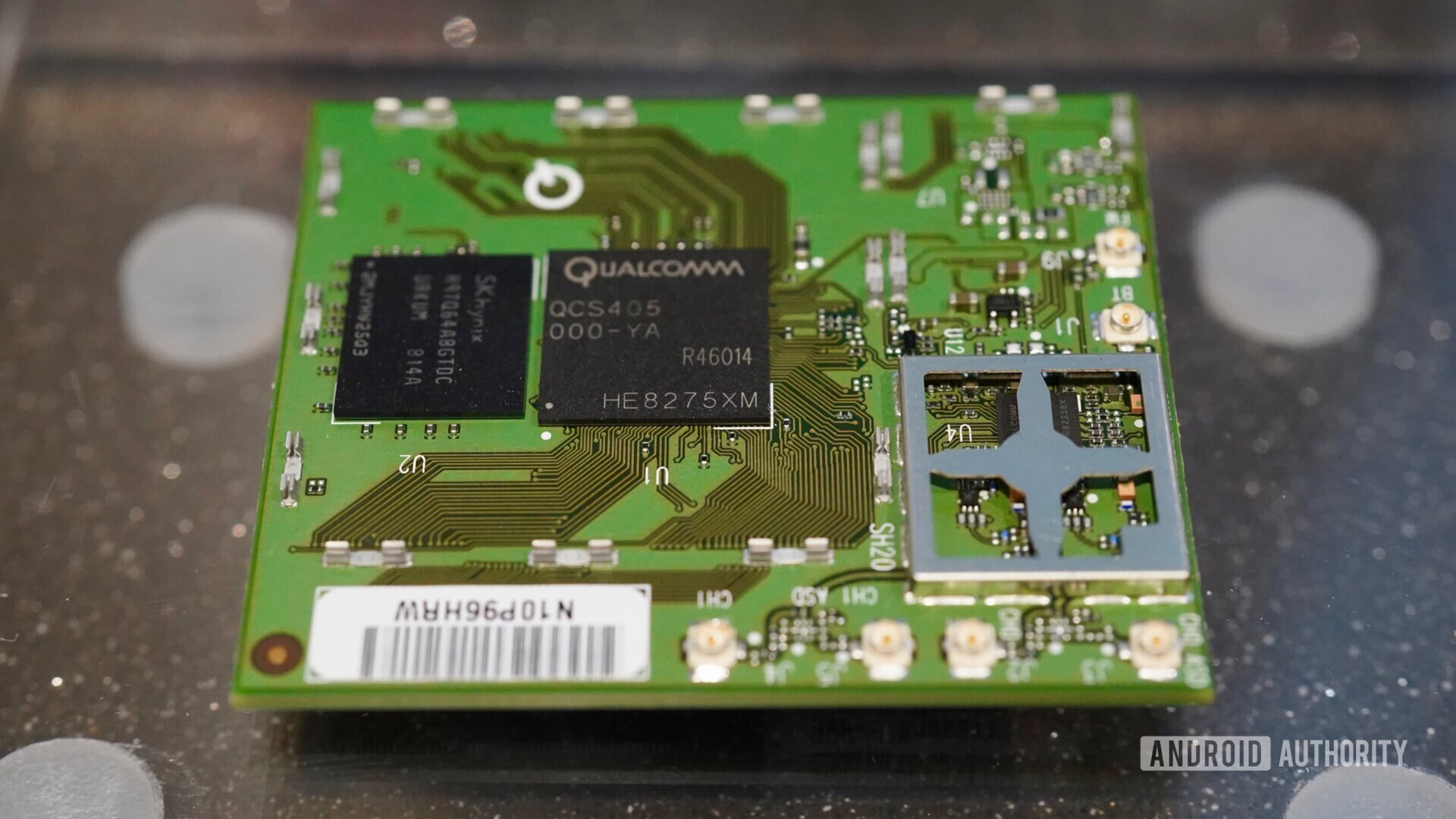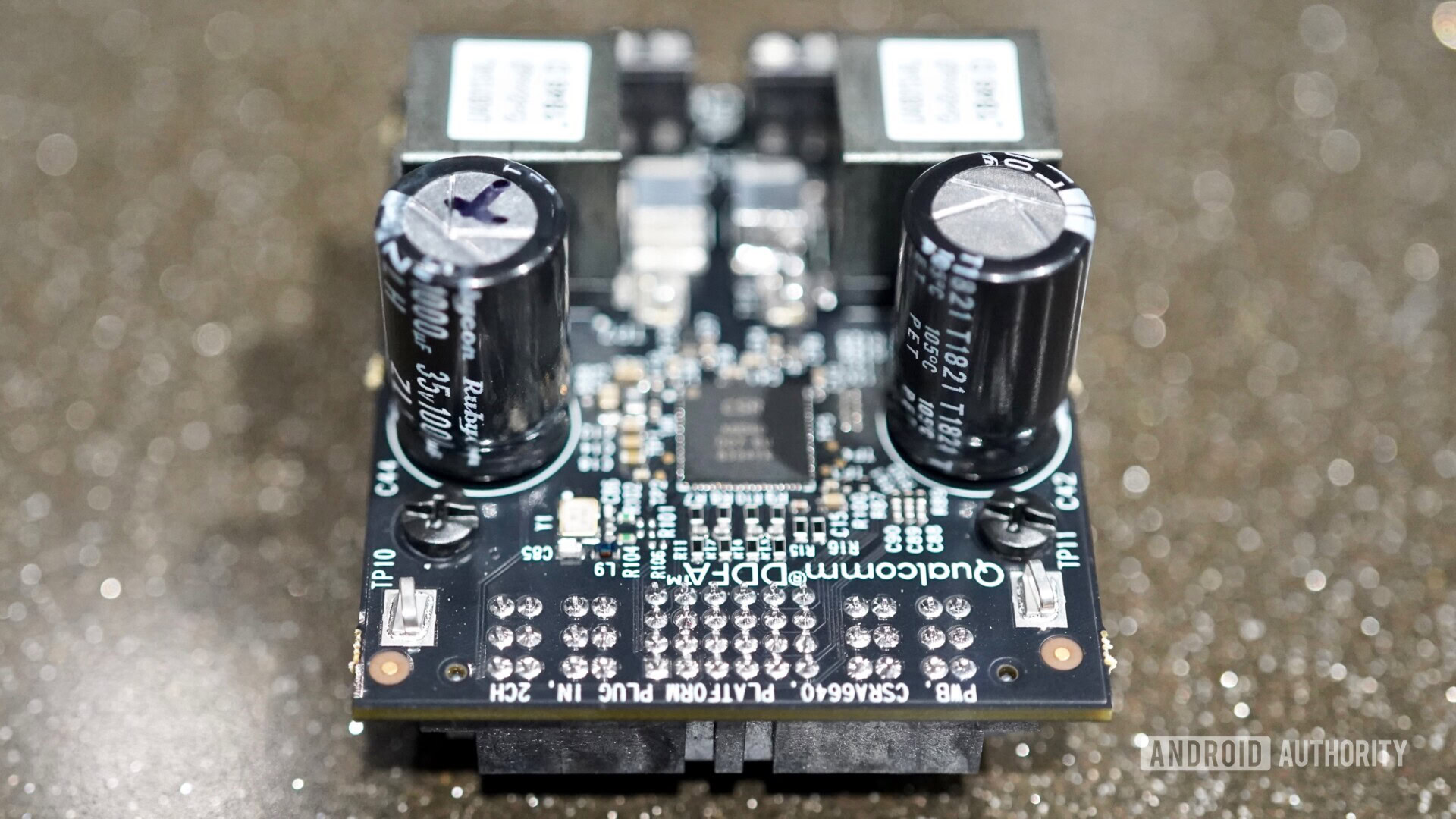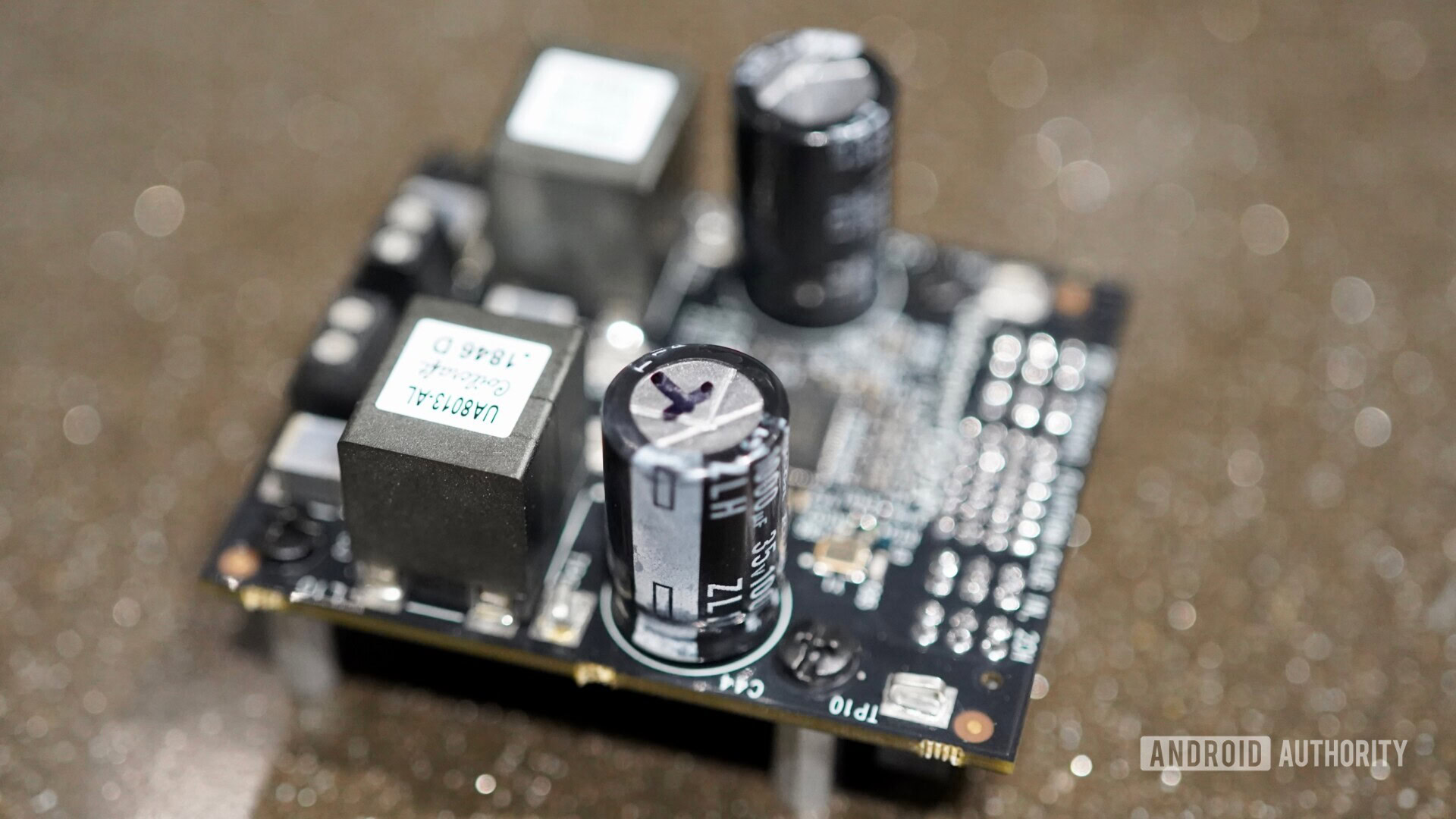Affiliate links on Android Authority may earn us a commission. Learn more.
Qualcomm says smart speakers to get smarter and sound better

Qualcomm’s vision for the future of smart speakers is one that’s dramatically better than what we have today. The company announced two new components that will improve the experience all around.
A dedicated system-on-a-chip, called the QCS400, aims to boost the IQ of sound bars, as well as in-home and portable smart speakers. Moreover, a refreshed power amplifier, called the CSRA6640, will bring better sound to lower-cost devices.
Smarter smart speakers
If you have a speaker powered by Amazon Alexa or Google Assistant, you already know that the experience can be frustrating. Sometimes the speaker doesn’t hear you, or mishears you, or makes you wait a second or two before it comes to life and responds. Whether given its smarts by Alexa or Assistant, the answers we receive run the gamut from straight on to off the rails.
The smart speakers on sale today are powered by a variety of parts-bin components. Qualcomm says it has (so far) gotten away with shoehorning its mobile SoCs into smart devices. Now that smart speakers are on track to be in 220 million homes by 2020 to 2021, Qualcomm knew it needed to up its game.
Hence the QCS400.

This series of chips is the first from Qualcomm that are dedicated to the smart home and smart speaker segments. They were engineered from the ground up with modern voice controls, connectivity, power needs, and quality in mind. The QSC400 was developed to provide a more robust voice user interface at low power while delivering a seamless experience.
The QSC400 modules read like something directly from Qualcomm’s Snapdragon lineup. Each has a quad-core power processor, the Hexagon DSP for audio interfaces, an Adreno GPU (for smart displays), 802.11ac WiFi, Bluetooth 5.0, and on-device security for keeping a lid on personal data.
One core aspect Qualcomm focused on was improving voice response time. Devices based on the QSC400 should respond to user requests faster. Keyword recognition is stronger. The QSC400’s DSP and audio interfaces give it more control over far-field microphones for recognizing those keywords. Interestingly, Qualcomm pitched the idea of allowing device builders to use their own brand name as the keyword, such as Bose or Sonos.
A seamless experience — particularly when streaming media — is highly reliant on connectivity. The QSC400 has advanced connectivity options, such as beamforming, to handle single- and multi-room streaming with little to no latency.
Qualcomm claims the QCS400 family improves standby battery life by a factor of 25 with active voice listening enabled. This is good news for portable smart speakers, which will chew through less power as they sit idly awaiting your command.
Let’s not forget audio quality. The chip supports Dolby, DTS X, and aptX Adaptive for the best in sound processing.
The QSC400 family comprises four distinct SoCs. The 403 is for home hubs, voice assistants, and entry-level sound bars; the 404 is for smart speakers, sound bars, and audio-capable mesh routers; the 405 is for premium smart speakers, smart sound bars, and display-capable home hubs; and the 407 is for premium smart sound bars and AVRs.
In the demos I saw at Qualcomm’s campus in San Diego, the QSC400 showed quick response times to voice commands and powered decent-sounding smart reference speakers. It will be up to device makers to really put the QSC400 to work.
Louder smart speakers
What good are smarts if you can’t put them to effective use?
The number one request made by owners of smart speakers is for the device to play music. Many existing smart speakers deliver a less-than-stellar audio experience. This is partly due to the fact that consumers will buy a device that is smart more so than a device that sounds good. Too many people settle for the mediocre experience provided by devices that are in their price range.
Qualcomm believes its new power amplifier will help devices in the $70 to $100 range sound better are much louder volumes.

Alongside the QSC400, Qualcomm today also announced the Qualcomm DDFA (Direct Digital Feedback Amplifier) CSRA6640. This really-badly-named part can provide up to 40 watts of power through a single channel or 20 watts through two speakers. The 6640 can be daisy-chained together for devices that require multiple input/output options.
There are two key innovations in this power amplifier. First, Qualcomm has reduced the number of needed components by about 50 percent. This won’t necessarily mean a bill-of-materials reduction of the same amount, but it will lead to savings on parts. Second, because it halved the number of components, the 6640 is much smaller than the previous generation power amplifier. Vitally, the 6640 does not require a heat sink. This gives device makers far more freedom to incorporate the amplifier into their devices.
Qualcomm also claims the 6640 has lower THD thanks to a double feedback loop. This means speakers powered by the 6640 will sound better at a higher volume, and drop buzzing during silent or low-volume operation to practically zero.
Competition for smart speakers is fierce and, according to Qualcomm, dependent for many on price. The 6640 should make it possible for device makers to differentiate by offering a better experience at a more affordable price point.

Qualcomm demonstrated this by pushing a Dolby movie clip through a sound bar with the two components working together. The sound bar was able to fill the room with an incredible amount of detailed sound, with all the bombastic boom you expect from your home theater.
Bottom line
Smart speakers that sound good and are portable are few and far between. Combining the QSC400 and 6640 in a single device should help bridge the gap.
Qualcomm says it is already working with partners to bring such smart, portable speakers to market starting in the third quarter of the year. Not only will these devices be compact and produce loud, high-quality sound, they’ll be far more responsive to voice input all while consuming less power.
This may sound like a dream, but it’s not too far out of reach.